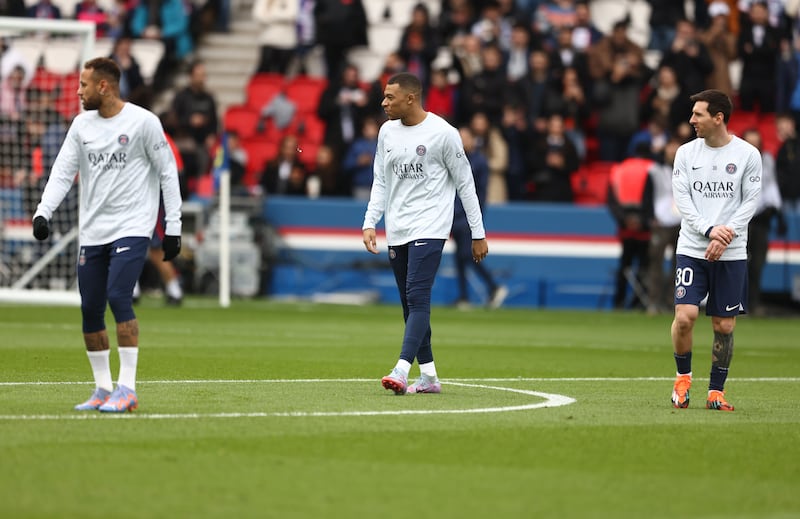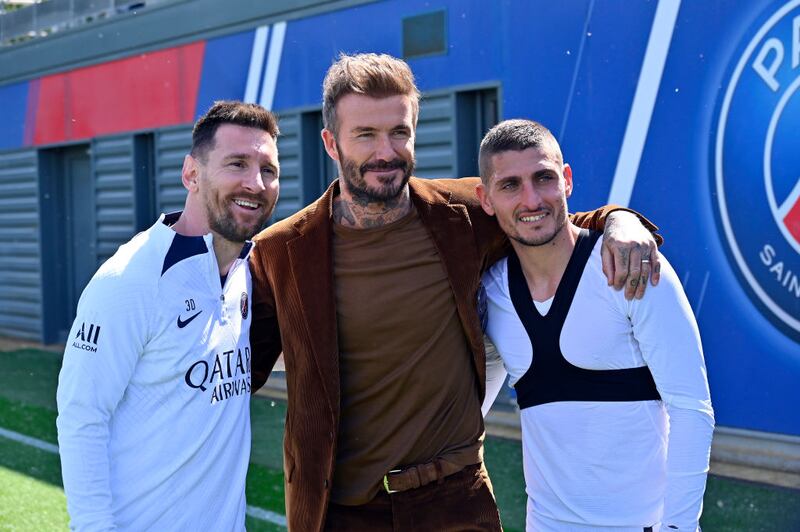Lionel Messi is taking his talents to South Beach – or, more accurately, Fort Lauderdale. That’s where he will play this summer after it was confirmed Inter Miami have won the race to sign arguably the greatest player of all time. It is the biggest transfer in Major League Soccer history. Bigger even than David Beckham’s move to Los Angeles Galaxy in 2007.
Beckham changed the soccer landscape in the US. His move to the Galaxy didn’t just push MLS into the American mainstream, it made the league a viable destination for some of the sport’s most recognisable names, and they don’t come more recognisable than Messi. Beckham, an Inter Miami co-owner, has brought things full circle by getting the GOAT to MLS.
Inter Miami chased Messi for years. When the franchise was awarded an MLS expansion spot in 2018, the Argentinian congratulated Beckham. “Who knows, maybe in a few years you can give me a ring,” he said in a social media video. When Messi left Barcelona in 2021, Inter Miami were quickly on the phone to make an offer, although he chose Paris Saint-Germain, where Beckham also once played. Earlier this year, Beckham attended a PSG training session and was pictured with Messi – a move to Inter Miami was surely mentioned.
Inter Miami were built around the idea Messi would one day join the club. Xavi Asensi was hired from Barcelona as the club’s chief business officer while Victor Oliver, another former Barça executive, was named a senior vice-president. Recent reports suggest the former Argentina and Barcelona coach Tata Martino has been approached about the club’s managerial vacancy. Sergio Busquets, Jordi Alba and Luis Suárez have also been linked with a move to Inter Miami, who may end up looking like a Messi And Friends XI.
READ MORE

On the pitch, Inter Miami are in bad shape. At PSG Messi lined up alongside Neymar and Kylian Mbappé, in Miami he will be a team-mate of Robert Taylor, once of Lincoln City and Barnet. Messi may have to win games on his own to push his team up the table: they are bottom of the Eastern Conference and on a run of five straight league defeats. There are also questions over whether Inter Miami’s temporary 18,000-capacity DRV PNK Stadium in Fort Lauderdale will be suitable for the coming circus. Could the much larger Hard Rock Stadium, home of the NFL’s Miami Dolphins, host some Inter Miami matches to sell more tickets? The appetite certainly appears to be there: Forbes reported that the cheapest tickets on resale websites for Messi’s possible home debut in August are exchanging hands for more than $500.
Messi’s signing is about much more than just Inter Miami though. MLS has pulled all sorts of levers to make a deal for the World Cup winner possible because it believes he will kick-start a new phase of growth for the league, just as Beckham did 16 years ago. MLS has generally moved beyond its previous dependence on ageing stars to attract new fans, but Messi is different – he can move the needle like nobody else.
Beckham changed the league. MLS grew from 13 teams at the time of his signing to the current number of 29 – the league’s 30th franchise will join in 2025. Beckham sold 300,000 LA Galaxy jerseys a season during his five-and-a-half years at the club. He appeared on late-night talkshows and in adverts with NFL stars. Without the Englishman’s star power, MLS would look very different.

With the 2026 World Cup, which the US will co-host with Canada and Mexico, on the horizon, and with Messi now an MLS player, the drive for growth in soccer in the US will reach new levels over the next three years. If MLS is to become one of the strongest leagues in the world, this period will be crucial.
The allure of Miami itself should not be ignored. He already owns property there and his family are said to enjoy the city, which has a large Spanish-speaking population: language barriers should not be a problem for the Messis. The governing body of Argentinian soccer also plans to build a facility in Miami, and more and more South Americans are joining MLS.
It’s possible Apple factored this, and the signing of Messi, into its decision to sign a record-breaking $2.5bn broadcast contract with MLS last year. Messi will reportedly receive a percentage of new MLS Season Pass subscriptions. A documentary series on the 35-year-old has already been ordered. AppleTV+ will essentially become MessiTV+.
A percentage of Adidas jersey sales is also believed to be included in the unprecedented commercial package put together by MLS for Messi. The Argentinian’s face is already plastered on billboards around the world, but now it will be used to sell MLS – and the player himself appears to be banking on his own celebrity to make his time in the league as lucrative as possible.
Never before has MLS given up so much to sign a player. Beckham had the chance to purchase a franchise for just $25m as part of his LA Galaxy contract, with the clause activated to create Inter Miami, but Messi’s overall package could be worth a lot more. “We have been pretty effective at coming up with clever ways to sign players for our clubs in the right market,” said MLS commissioner Don Garber earlier this year, hinting at the creativity used to draw up Messi’s deal.
It will be worth it if Messi makes the impact so many expect him to. “I think of him as someone who crosses so many barriers that he can be bigger than any athlete of any sport that has ever played here in the United States,” said Garber.
If Beckham’s move to MLS highlighted the potential of the league and soccer in the US, Messi could be the one who fully realises it. – Guardian














